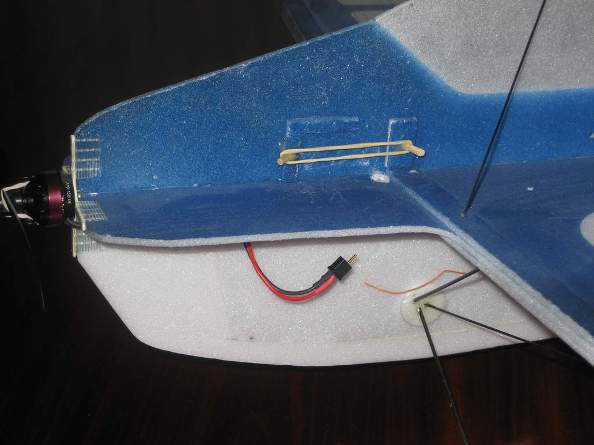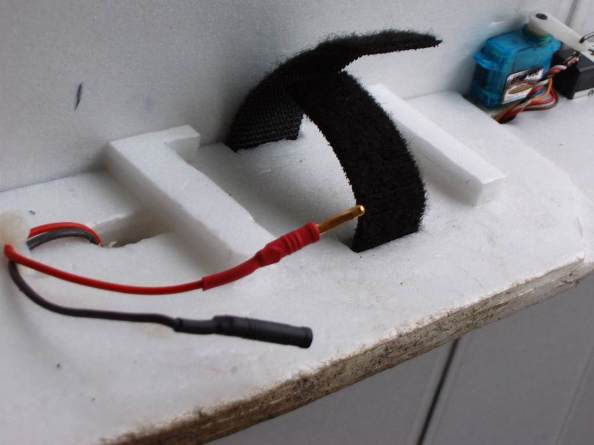Velcro pads work but I don't like them. You have to stick pads to all your packs! Also it puts some strain on the airframe when you pull it off.
A velcro strap around the pack that holds it in place but is not attached to it is a better solution in my opinion especially for larger packs, say 2s 500mAh+. The example below is pretty bulky and is in an old outdoor plane of mine but I've done something similar with a much narrower strap for indoor planes. There are two downsides: the velcro is a bit heavy and also if you don't reinforce the slots in the depron it will start to tear and crush over time.
My preference especially for lighter stuff like the F3P planes is just a small elastic band. Laminate some small pieces of depron to locate the battery and to provide enough material to anchor the pins for the elastic band. Don't make the pins too narrow (e.g. cocktail sticks) or they'll be inclined to tear the depron (The pins in the picture below are about 2.5mm diameter from a bamboo skewer, a bit of 1/8" balsa dowel is probably even better). You only need very little tension on the band especially for small <30g packs.
I really like this method. it's tidy, easy, light and reliable.
You can use double sided tape or velcro pads for the first flight or two if you want to check the CG before adding a permanent battery holder.
Aidan

